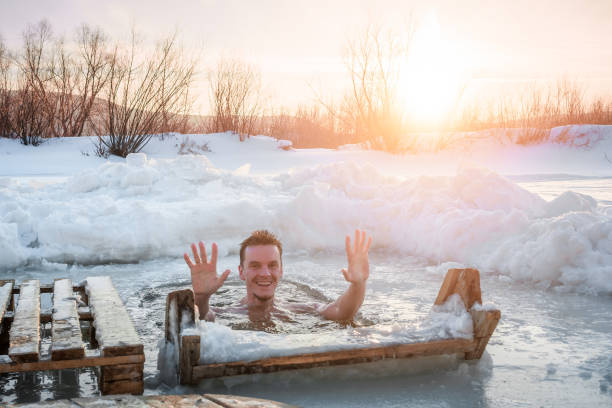The practice of using ice baths for post-workout recovery has become increasingly popular in recent years, especially among athletes and fitness enthusiasts who workout in gyms like UFC and Title Boxing Club.
Cold-water immersion has been used for centuries to promote health and wellness. Ice baths involve a brief plunge in 50 to 59°F water and can help reduce inflammation, relieve sore muscles, aid exercise recovery, lower core body temperature, support immunity, and improve mental health.
However, much of the research on the benefits of ice baths is mixed, and there are no standard guidelines for how to make an ice bath.
Reducing Inflammation and Swelling
When you take an ice bath, the cold temperature narrows your blood vessels, which decreases blood flow to your muscles. This can reduce swelling and inflammation, and research suggests that cold therapy can lower post-exercise inflammation better than other methods like compression socks.
Relieving Sore Muscles
Although scientists are unsure how it works, cold water can help relieve sore muscles, possibly by reducing inflammation and slowing nerve signaling, leading to less pain. Ice baths can reduce delayed-onset muscle soreness (DOMS) after exercise, and evidence suggests they may also ease pain from chronic conditions like gout, fibromyalgia and rheumatoid arthritis.
Aiding Exercise Recovery
After an ice bath, your blood vessels dilate, increasing circulation and nutrient-rich blood flow to your muscles, helping remove metabolic waste built up during exercise. Some studies suggest that ice baths are an effective recovery method, but they can also hinder training adaptations that allow you to build muscle and improve your performance.
Active-recovery workouts might be a more reliable option if you want to increase muscle mass or strength.
Lowering Core Body Temperature
Ice baths can help you cool down when you’re overheated. Soaking in cold water for just under 10 minutes can reduce your core body temperature after a workout, helping you avoid heat stroke and heat exhaustion.
Supporting Immunity
Some evidence suggests that ice baths can support a healthy immune system. In a small study, people who combined cold water immersion, deep breathing, and meditation had fewer bacterial infection symptoms than those who did not.
Improving Mental Health
Ice baths might also be good for your mental health. A small study found that taking a 20-minute ice bath four days a week improved quality of life in people with gout, with better joint mobility, less stress, anxiety, and depression.
Exposing your body to cold water triggers a stress response and activates the nervous system, improving mood and helping you adapt to stress over time.
How to Make an Ice Bath
There are no standard guidelines for making an ice bath. Options include going to a gym or spa, buying an at-home ice bath with a temperature control system, or using your bathtub.
To make an ice bath at home, run lukewarm water, gradually add ice cubes to the tepid water, and step into the tub slowly when the water reaches 50 to 59°F, or 10 to 15 minutes after adding ice.
Ice baths may not be for everyone and pose a risk to people with certain conditions, so it’s important to speak to your healthcare provider first.
Learn more about the benefits of ice baths here:
